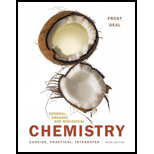
a.
To determine:
Do passive diffusion require energy when transporting molecules across the cell membrane?
Introduction:
Passive diffusion: passive transport is a movement of ions and other atomic or molecular substances across cell membrane without need of energy input, it is instead driven by the tendency of the system to grow in entopy.
Facilitated transport: this process involves the passive movement of molecules along their concentarion gradient, guided by the presence of another molecules, usually intergral membrane protein forming a pore or channel called transport protein.
Active transport: it is the movement of molecules across a memebrane from a region of concentration to a region of higher concentration, in the direction against the concentration gradient active transport require cellular energy for this movement.
b.
To determine:
Do facilitated transport require energy when transporting molecules across the cell membrane?
Introduction:
Passive diffusion: passive transport is a movement of ions and other atomic or molecular substances across cell membrane without need of energy input, it is instead driven by the tendency of the system to grow in entopy.
Facilitated transport: this process involves the passive movement of molecules along their concentarion gradient, guided by the presence of another molecules, usually intergral membrane protein forming a pore or channel called transport protein.
Active transport: it is the movement of molecules across a memebrane from a region of concentration to a region of higher concentration, in the direction against the concentration gradient active transport require cellular energy for this movement.
c.
To determine:
Do active transport require energy when transporting molecules across the cell membrane?
Introduction:
Passive diffusion: passive transport is a movement of ions and other atomic or molecular substances across cell membrane without need of energy input, it is instead driven by the tendency of the system to grow in entopy.
Facilitated transport: this process involves the passive movement of molecules along their concentarion gradient, guided by the presence of another molecules, usually intergral membrane protein forming a pore or channel called transport protein.
Active transport: it is the movement of molecules across a memebrane from a region of concentration to a region of higher concentration, in the direction against the concentration gradient active transport require cellular energy for this movement.
Want to see the full answer?
Check out a sample textbook solution
Chapter 8 Solutions
General, Organic, and Biological Chemistry; Modified Mastering Chemistry with Pearson eText -- ValuePack Access Card (3rd Edition)
- How does the polarity of the phosphoglycerides contribute to their function of forming cell membranes?arrow_forwardHow are phospholipids similar in structure to a soap molecule? What structural difference accounts for the fact that phospholipids form lipid bilayers rather than the micelles that soaps form?arrow_forwardStarch contains CC, CH, CO, and OH bonds. Hydrocarbons have only CC and CH bonds. Both starch and hydrocarbons can form colloidal dispersions in water. Which dispersion is classified as hydrophobic? Which is hydrophilic? Explain briefly.arrow_forward
- 76. Space-filling diagrams for the structures of vitamin A, vitamin D, and vitamin C are shown below. Which are fat soluble? Which are water soluble? What is the difference between the structures of water-soluble and fat-soluble vitamins?arrow_forwardA martini, weighing about 5.0 oz (142 g), contains 30.0% by mass of alcohol. About 15% of the alcohol in the martini passes directly into the bloodstream (7.0 L for an adult). Estimate the concentration of alcohol in the blood (g/cm3) of a person who drinks two martinis before dinner. (A concentration of 0.00080 g/cm3 or more is frequently considered indicative of intoxication in a normal adult.)arrow_forwardInsulin is a protein important in the metabolism of sugar. Its molar mass can be determined by means of an osmotic pressure experiment. A 50.0-mg sample of insulin was dissolved in enough water to make 100. mL of solution. This solution was determined to have an osmotic pressure of 21.8 mm H2O. What is the molar mass of insulin? (Hint: The density of mercury is 13.6 g/mL.)arrow_forward
 Chemistry for Today: General, Organic, and Bioche...ChemistryISBN:9781305960060Author:Spencer L. Seager, Michael R. Slabaugh, Maren S. HansenPublisher:Cengage Learning
Chemistry for Today: General, Organic, and Bioche...ChemistryISBN:9781305960060Author:Spencer L. Seager, Michael R. Slabaugh, Maren S. HansenPublisher:Cengage Learning General, Organic, and Biological ChemistryChemistryISBN:9781285853918Author:H. Stephen StokerPublisher:Cengage Learning
General, Organic, and Biological ChemistryChemistryISBN:9781285853918Author:H. Stephen StokerPublisher:Cengage Learning Organic And Biological ChemistryChemistryISBN:9781305081079Author:STOKER, H. Stephen (howard Stephen)Publisher:Cengage Learning,
Organic And Biological ChemistryChemistryISBN:9781305081079Author:STOKER, H. Stephen (howard Stephen)Publisher:Cengage Learning, Introductory Chemistry: A FoundationChemistryISBN:9781337399425Author:Steven S. Zumdahl, Donald J. DeCostePublisher:Cengage Learning
Introductory Chemistry: A FoundationChemistryISBN:9781337399425Author:Steven S. Zumdahl, Donald J. DeCostePublisher:Cengage Learning Chemistry: Principles and ReactionsChemistryISBN:9781305079373Author:William L. Masterton, Cecile N. HurleyPublisher:Cengage Learning
Chemistry: Principles and ReactionsChemistryISBN:9781305079373Author:William L. Masterton, Cecile N. HurleyPublisher:Cengage Learning





